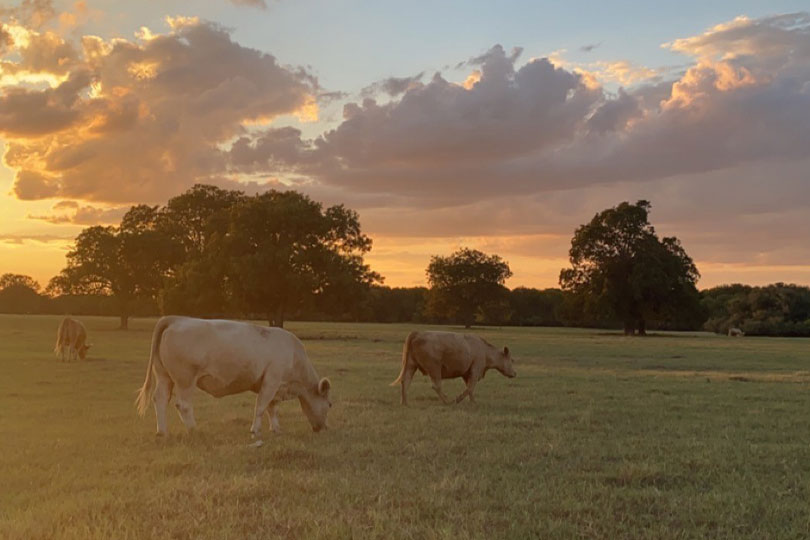By Emmy Powell
Communications Specialist
Mineral intake is an important aspect of ensuring nutrition is maintained in grazing beef cattle herds.
Minerals and vitamins play vital roles in cattle reproduction, immunity and growth.
Cattle will most likely need vitamin and mineral supplements. Dr. Bob Judd, veterinarian and host of Texas Vet News on the Texas Farm Bureau Radio Network, notes the importance of regulating salt intake.
Minerals are loosely grouped into two categories: macrominerals and trace or micro-minerals.
Macro-minerals include calcium, phosphorus, magnesium, potassium, sulfur and salt. They are needed in relatively large amounts in the body.
The trace minerals include cobalt, copper, iodine, iron, manganese, selenium and zinc. These are needed in very small or “trace” amounts in the body.
“Salt is a driving force affecting mineral intake,” Judd said. “If cattle are ingesting large amounts of salt in the forage, they will decrease intake of high salt mineral. So, adjusting the amount of salt in the mineral is the best method of regulating intake.”
Mineral needs will be different based on the type of forage available.
The location and availability of clean water also impact cattle mineral intake. Cattle Will have more consistent mineral intake if they have regular access to clean water. Judd said the form of the mineral supplement is also important.
“The form of the mineral also plays a role in consumption as cows consume less block mineral than loose mineral, just because it takes more time to consume the block mineral,” he said. “If cattle are over-consuming mineral, blocks are a good option as the high palatability of tubs with mineral can result in overconsumption.”
Another way to control mineral intake is moving the location of the feeder. If mineral intake is too high, move the mineral feeder further away from the water source and loafing areas. If not enough mineral is being consumed, move the mineral feeder closer to the water source and loafing areas.
Loose mineral can be the most cost-efficient option, Judd noted.
He recommends measuring the amount of mineral consumed and considering the quality of the mineral and the mineral content of the forage the cattle are grazing.
Texas Vet News can be heard daily online and on Texas Farm Bureau Radio Network affiliate stations.

